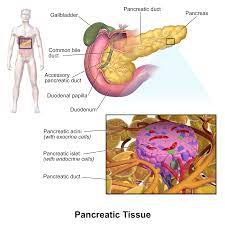Within just 81 days of the new year, Brazil has been gripped by a staggering resurgence of dengue fever, with reported cases surpassing 2 million, according to data released by the Arbovirus Monitoring Panel of the country’s Ministry of Health. This spike represents a startling 19% increase compared to the total recorded cases in the entirety of the previous year, marking the highest number of dengue cases ever recorded in Brazil within a single year.
Nine states along with the Federal District have already declared a state of emergency in response to the soaring incidence of dengue. Among the most heavily impacted regions are the Federal District, Minas Gerais, and São Paulo. The dire situation is compounded by the confirmation of 682 deaths attributed to the disease, with an additional 1042 suspected cases currently under evaluation.
In light of this escalating crisis, medical professionals are grappling with the urgent need to effectively manage the resurgence of dengue and prevent further fatalities. André Ricardo Ribas Freitas, PhD, an esteemed epidemiologist and professor at Faculdade São Leopoldo Mandic in Campinas, São Paulo, Brazil, and a member of the Epidemiological Surveillance Core at Municipal Hospital Mário Gatti in Campinas, sheds light on crucial strategies to address the alarming trend.
Ribas emphasizes the necessity of equipping healthcare workers with updated knowledge on identifying and managing severe dengue cases. In an exclusive interview with the Medscape Portuguese edition, Ribas underscores pivotal updates in diagnosing severe dengue cases.
One significant shift in approach involves discarding the term “hemorrhagic dengue” to define severe cases, as recent scientific findings indicate that hemorrhage is not always a defining characteristic. Instead, Ribas points out that severe cases often manifest through indicators such as hypotension, shock, myocarditis, encephalitis, heart failure, or noncardiogenic pulmonary edema, none of which are solely dependent on bleeding.
According to Ribas, this paradigm shift underscores the importance of vigilance regarding symptoms beyond hemorrhagic manifestations. He stresses the critical need for both healthcare professionals and the general population to recognize warning signs such as abdominal pain, repeated vomiting, decreased urine output, or dizziness when standing, which could signify a progression to severe dengue.
Ribas further emphasizes the significance of monitoring vital signs, particularly pulse and blood pressure, as well as conducting comprehensive assessments that include measuring hematocrit levels to gauge the risk of disease progression. By adopting a more holistic approach to diagnosis and management, healthcare providers can more effectively intervene and mitigate the potentially fatal consequences of severe dengue.
In his courses for medical practitioners, Ribas reinforces the importance of educating patients about warning signs associated with severe dengue, advocating for adequate hydration tailored to individual body weight, and conducting thorough assessments that include measuring both sitting and standing blood pressure. Additionally, he highlights the critical role of hematocrit levels in assessing disease severity, emphasizing its superiority over platelet count as an indicator of worsening dengue.
As Brazil grapples with an unprecedented surge in dengue cases, Ribas’s insights serve as a beacon of guidance for healthcare professionals navigating the complexities of this escalating public health crisis. Through proactive measures and enhanced vigilance, medical practitioners stand poised to stem the tide of dengue-related morbidity and mortality, safeguarding the health and well-being of communities nationwide.











